Home Counties Meeting at Dagenham
Saturday 10th June 2023
This was the fourth of a series of full-day meetings in the Home Counties that we hope will encourage more members to attend face-to-face events because they will not have to travel into central London. It was held in the Eastbrookend Discovery Centre in Dagenham, a venue with free parking, a good bus service linking it to the nearby District Line, and lakes, grassland and woodland for collecting specimens.
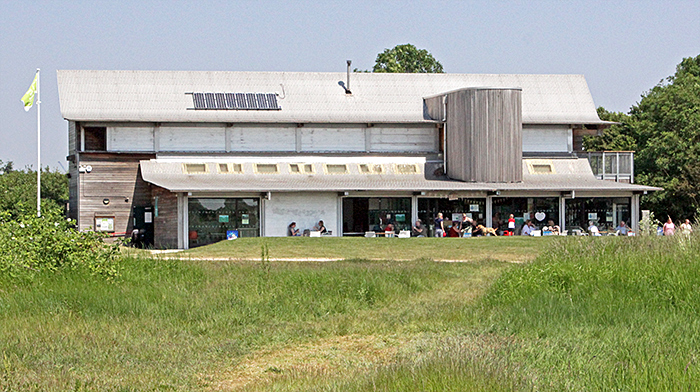 Eastbrookend Discovery Centre
Eastbrookend Discovery Centre
We set up our microscopes in the Education Room on the ground floor, which has tables, chairs and a large sink, opens onto the Eastbrookend Country Park, and is adjacent to the Tea Room.
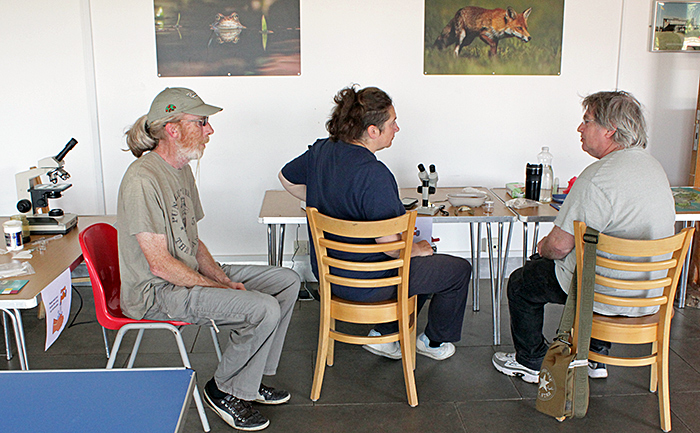 Education Room (Nigel Ashby, Lisa Ashby, Robert Ratford)
Education Room (Nigel Ashby, Lisa Ashby, Robert Ratford)
After setting up our microscopes, Lisa and Nigel Ashby took their plankton net to the nearby Bardag Lake, which has willows, yellow iris and stinging nettles on its banks. We saw some large carp in the water and a pair of swans with 8 cygnets, and a large clump of water lilies.
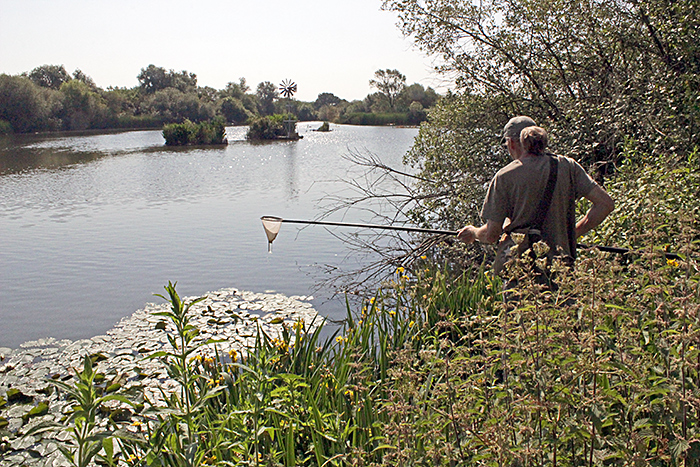 Nigel Ashby collecting
Nigel Ashby collecting
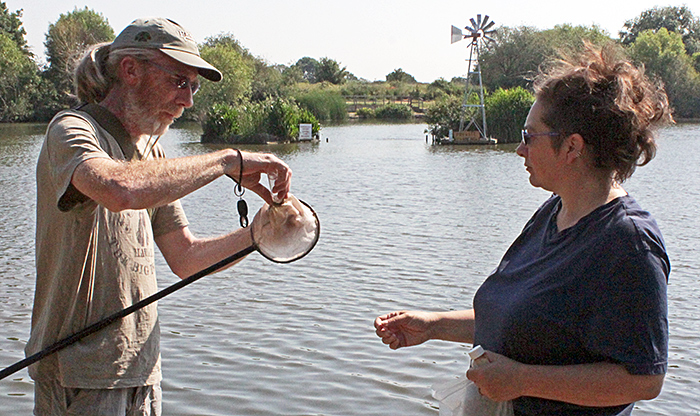 Nigel and Lisa Ashby collecting
Nigel and Lisa Ashby collecting
Nigel and Lisa filled several tubes with specimens to take back to the Centre.
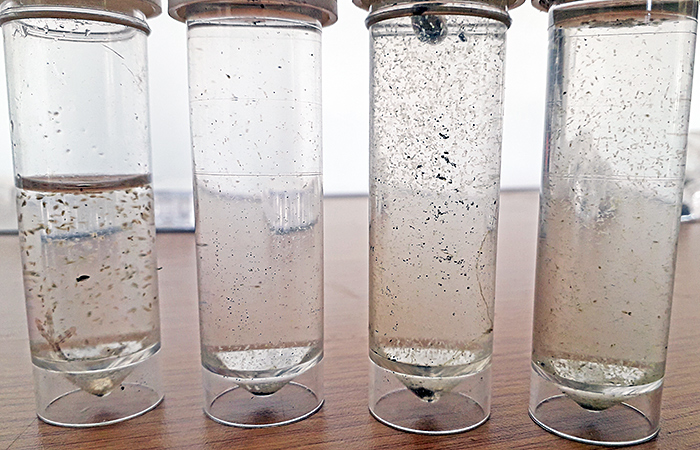 Specimens from the lake [by Lisa Ashby]
Specimens from the lake [by Lisa Ashby]
Lisa brought a simple compound microscope (SP35 from Brunel Microscopes) that has a built-in rechargeable battery, and a small stereomicroscope with inclined eyepieces. These two microscopes are part of Lisa’s new outreach kit, and they can be sent to Quekett members who wish to undertake outreach activities.
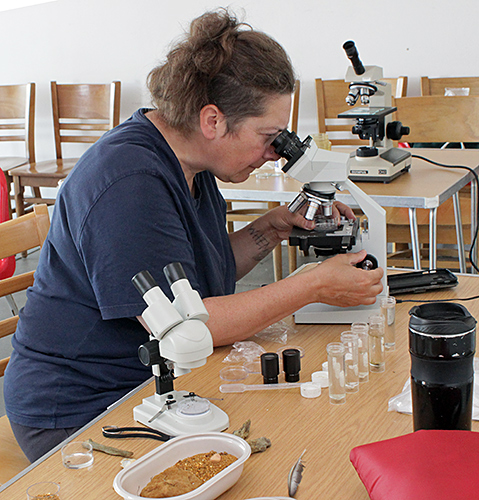 Lisa Ashby examining the catch
Lisa Ashby examining the catch
The specimens that Lisa found included some almost-transparent free-swimming rotifers (perhaps Asplanchna), some Volvox colonies, freshwater shrimps (Gammarus), phantom midge larvae (Chaoboridae), copepods, Cladocera and a water boatman (Corixa).
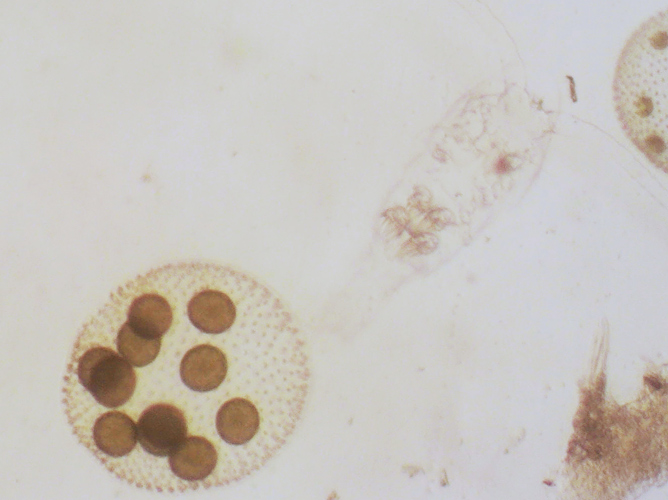 Volvox and a copepod [by Lisa Ashby]
Volvox and a copepod [by Lisa Ashby]
Click the arrow to start the video; click the symbol to the left of “vimeo” for a larger version
[Video by Lisa Ashby]
Click the arrow to start the video; click the symbol to the left of “vimeo” for a larger version
[Video by Lisa Ashby]
Lisa has been collecting sand, and asked about the best way to show samples under a microscope. For loose material, we suggested coin capsules (which can be glued to slides) or slides with aluminium spacers that can have coverslips glued on. For fixed material, we suggested microfossil slides such as the ones from Earthlines and GeoRockShop, using gum arabic to fasten the grains.
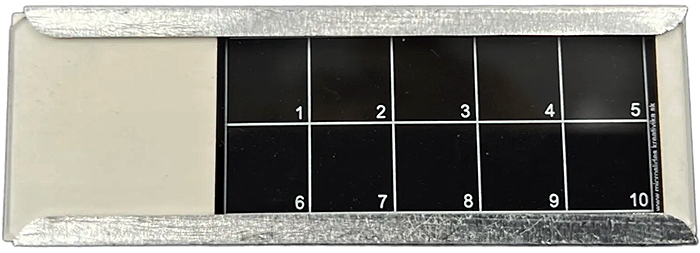 Microfossil slide (Plummer style)
Microfossil slide (Plummer style)
Robert Ratford brought a Chinese trinocular stereomicroscope with transmitted-light base that is obviously based on the Olympus SZ4045. Robert used LED lighting, including two spotlights with clamps that he attached to the rectangular camera mount.
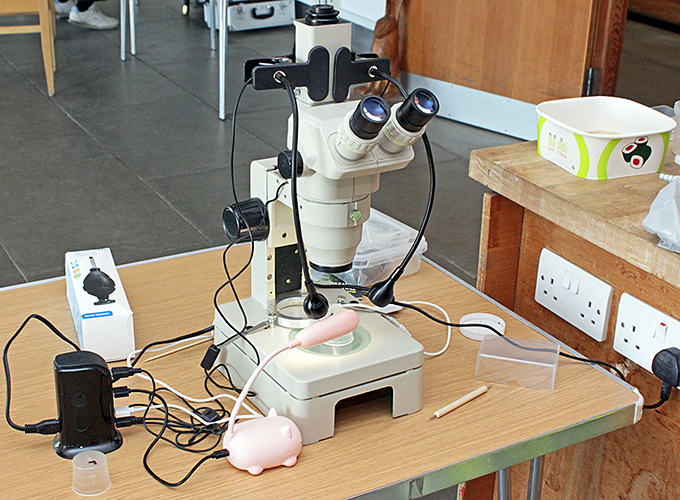 Robert Ratford’s exhibit
Robert Ratford’s exhibit
The specimens in Robert’s sample included a large red water mite, phantom midge larvae (Chaoboridae), mosquito larvae, ostracods and waterfleas (Daphnia) that were pink because they produce haemoglobin when the oxygen level in the water is low.
Robert introduced us to an embossing stylus set. Each stylus consists of a cylindrical handle with different size ball tips at each end. He uses them for gently arranging specimens without damaging them.
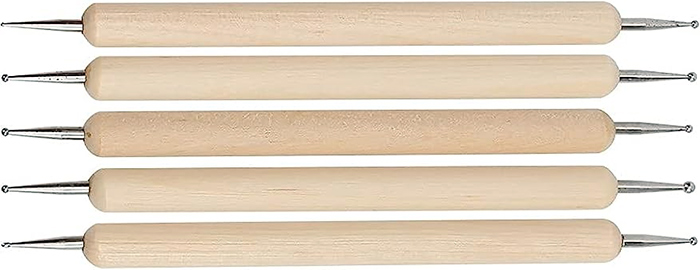 Embossing stylus set
Embossing stylus set
Alan Wood brought his Olympus CH-2 microscope, without its mechanical stage and with a monocular head so that it was not too heavy to carry on public transport. He also brought some moss from the roof of his bungalow that had been soaking in rain water for 2 days, so that he could have a go at a moss safari.
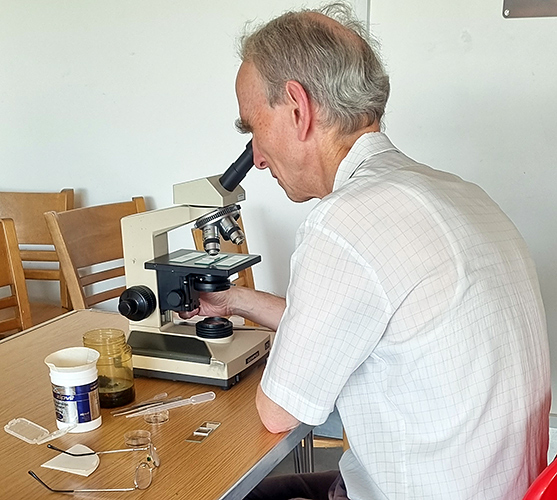 Alan Wood [by Robert Ratford]
Alan Wood [by Robert Ratford]
Alan transferred the last bit of water in the filter paper into cavity slides and slides with aluminium spacers, and found a few nematodes, a couple of rotifers moving around in the debris, and some small ciliates. There were also lots of dead rotifers.
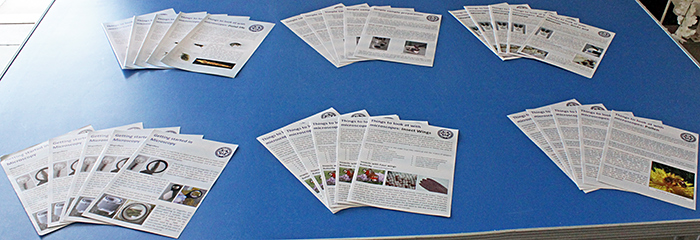 Quekett leaflets
Quekett leaflets
(also available as free downloads)
Report and most photographs by Alan Wood

